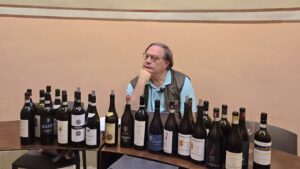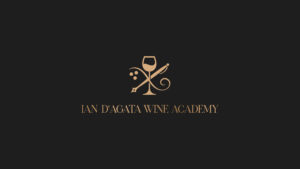The Rise and Diversity of Rosé Champagne
Rosé Champagne, with its elegant pink hues, delicate fruit aromas, and exceptional versatility in food pairings, has captured significant global attention in recent years. From exclusive high-end banquets to everyday dining tables, it has become an essential element of celebratory and culinary culture. According to data from Kings Research, the global champagne market was valued at $7.8916 billion in 2023 and is projected to grow at a compound annual growth rate (CAGR) of 4.8% from 2024 to 2031, with Rosé Champagne standing out as a key contributor (source: Kings Research).
This article combines market dynamics, consumption trends, and food pairing opportunities to provide a comprehensive analysis of the captivating allure of Rosé Champagne.

Global Market Dynamics and Growth Performance
Rosé Champagne has exhibited remarkable growth trends in the global market in recent years. According to data from the Champagne Committee (CIVC), the global shipment volume of Rosé Champagne increased by 27.7% year-on-year in 2021, with a 25.2% rise in revenue, indicating sustained demand across both high-end and everyday consumption. The regional market performance has been just as impressive, with strong trends in Europe, North America and Asia. Europe, the traditional stronghold for Champagne, accounted for 34.78% of the global champagne market in 2023, with an estimated market value of $2.7447 billion (source: Kings Research). Consumers in France and the UK exhibit a strong preference for Rosé Champagne, with its romantic hues and refreshing taste making it a popular choice for celebrations and daily consumption. In North America, the United States represents one of the largest Champagne markets globally, and Rosé Champagne has shown particularly strong performance. According to Straits Research, Millennials and Generation Z individuals will comprise 61% of total wine consumers in the U.S. by 2024. Apparently, these younger consumers, driven by a pursuit of high-quality lifestyles, are more inclined to choose Rosé Champagne for its appealing aesthetics and refined taste (source: Straits Research). Lat but certainly not least, Asia has emerged as one of the fastest-growing markets for Rosé Champagne, especially in China, Japan, and South Korea. Here, cultural factors also play a significant role: the pink tones of Rosé Champagne align with traditional Asian symbols of “celebration” and “good fortune,” making it particularly suitable for weddings, Lunar New Year celebration, and other important occasions. According to Kings Research, the Asian market for Rosé Champagne is projected to grow at a CAGR of 6.08% from 2024 to 2031. South Korea, in particular, has become a growth hub for premium alcoholic beverages. Interestingly, there Rosé Champagne is a symbol of high-quality living, and is increasingly favored by young, monied, consumers. According to Euromonitor, South Korea’s champagne market has maintained an annual growth rate of approximately 6% over the past five years, with Rosé Champagne excelling in high-end dining and party settings due to its versatile appeal. Clearly, Rosé Champagne is enjoying a growing global influence, reflected both by its expanding market share and cultural resonance across diverse regions.
The Broad Compatibility of Food Pairings
Among the many aces up its sleeve, Rosé Champagne also stands out because it offers a versatile option at the dining table due to its high acidity and rich fruit flavors, which create harmonious pairings with a wide range of foods, including meats.
It is an excellent companion to appetizers such as oysters and seafood. The minerality and acidity of Rosé Champagne enhance the briny freshness of oysters, scallops, and other seafood. Smoked salmon is another match made in heaven: the fruitiness and freshness of Rosé Champagne, as well as its delicate bubbles, help balance the richness of the fish’s natural oils and meaty texture. But Rosé Champagne proves very flexible with most main courses. For example, poultry and light red meats were absolutely made for Rosé Champagnes, in which the fresh, juicy red berry notes complement the caramelized aromas and flavours of dishes like roast duck and seared lamb chops. Spicy Asian dishes also work exceptionally well with pink bubblies: for example, Thai red curry or Chinese sweet and sour pork pairs well with Rosé Champagne, as its fruitiness and bubbles counterbalance the spiciness and amplify the overall flavours f the dish. Undoubtedly, it is a drink that works much, much better with such dishes than do a majority of Sauvignon and Chardonnay wines. And as surprising as it maybe, Rosé Champagne can work very well with desserts, though, as always, a great deal of caution ahs to be exercised when pairing what are classically (more or less) dry tipples with anything sweet. Not surprisingly, Rosé Champagne pairs seamlessly with berry-based desserts like raspberry tarts or strawberry cream cakes (though best for the cream not to be too sweet). Additionally, it creates a delightful contrast with chocolate desserts, adding layered complexity, but again, theses desserts need to be on the lighter side, or the delicacy of the Champagne will be overpowered.
A Tasting Guide to Rosé Champagne
Rosé Champagne is more than just a visual and gustatory delight; its intricate production process is an art form. From traditional methods to modern innovations, every bottle of Rosé Champagne reflects the winemaker’s precision and profound understanding of terroir.
Assemblage Method
The blending method is the most common technique for producing Rosé Champagne, accounting for the majority of the market share. This process involves mixing base Champagne with a specific proportion of red wine (typically Pinot Noir or Pinot Meunier) to achieve the desired color and flavor profile. The red wine usually comprises 5%-20% of the blend, depending on the house style and market demands. The quality of the red wine is critical to the stability and complexity of the final product, requiring winemakers to precisely balance the intensity of the red wine’s fruitiness with the purity of the base champagne.
Maceration Method
This method involves briefly soaking crushed red grape skins with their juice (typically for 12-24 hours). Precise control of soaking time is crucial, as even slight deviations can result in overly heavy body or uneven coloration in the finished wine. Unlike the blending method, maceration directly extracts the desired color and flavor elements from the red grapes. Rosé champagnes made using this technique tend to have a fuller body, more intense fruitiness, and a stronger structure. They are better suited for aging or pairing with rich, flavorful dishes.
Saignée Method
The saignée method is a unique and intricate process for producing Rosé wines and Champagnes. It involves briefly macerating de-stemmed red grapes (such as Pinot Noir) to extract color and flavor. After a short contact period (usually a few hours to 24 hours), a portion of the juice is “bled” off to be fermented separately into Rosé wine or Champagne. Wines produced through this method typically range in color from pale pink to light red, with intense fruit aromas such as strawberry, raspberry, and red cherry. They often exhibit moderate tannin and robust structure. This technique requires meticulous control over color and flavor extraction, taking into account factors like grape ripeness, phenolic concentration, and the avoidance of unpleasant green notes. The saignée method highlights deeper fruit aromas and mineral complexity.
Enhancing Complexity with Oak Aging
Some winemakers ferment or age a portion of the base wine in oak barrels to add complexity and structure. This practice is particularly suited for premium vintage Rosé Champagnes, providing them with deeper flavors and enhanced aging potential. Such Champagnes often exhibit a layered palate, combining fruitiness with subtle notes of vanilla, spices, and toast, making them a sophisticated choice for collectors and connoisseurs alike.
The wines in this tasting report
These five iconic, classic, Rosé Champagnes exemplify diverse winemaking techniques and styles, each offering unique expressions of their respective terroirs, grape blends, and craftsmanship. They stand as benchmarks in the world of Rosé Champagne, catering to a variety of palates and occasions.



